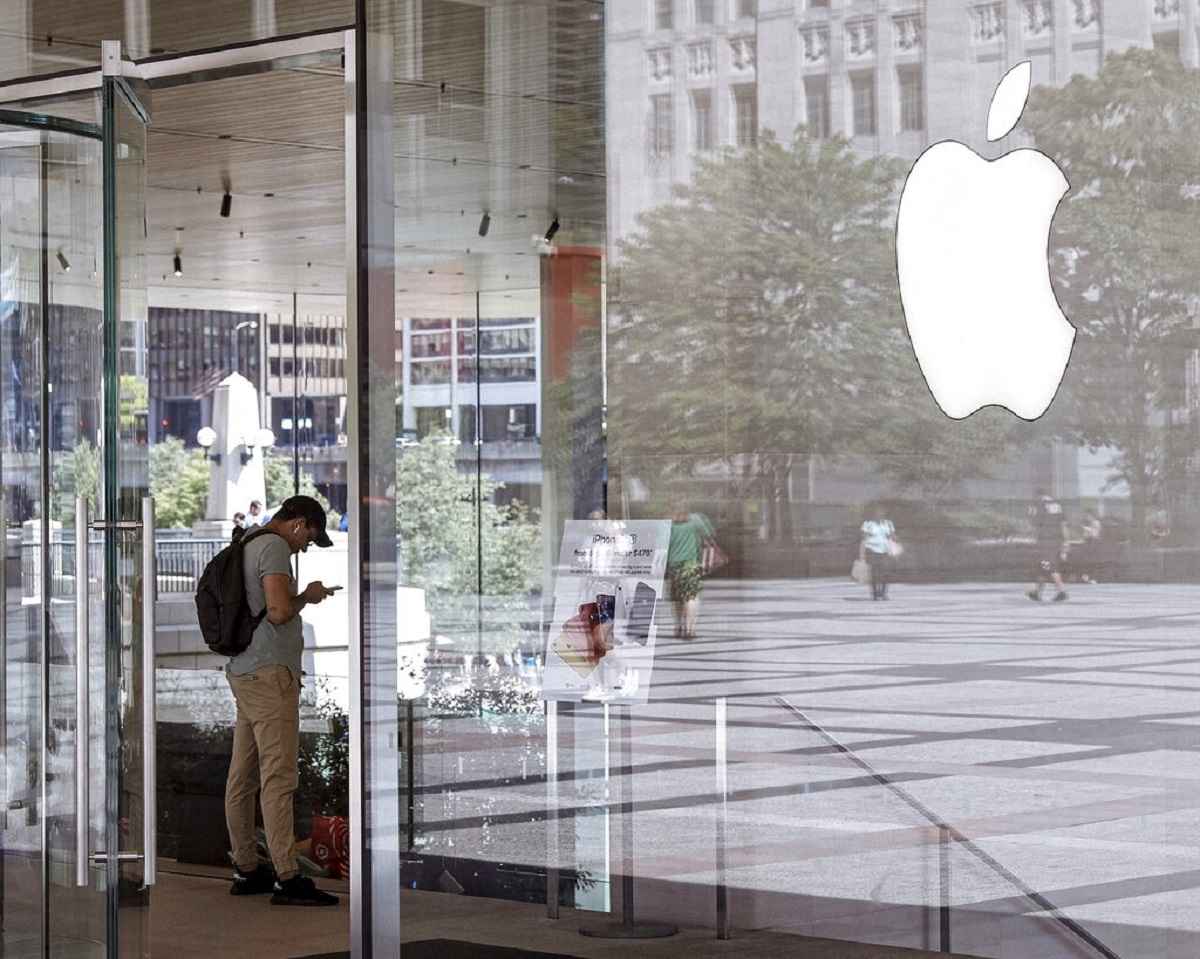
This Wednesday, July 24, 2019 photo shows an Apple Store in Chicago is seen. Apple reports financial earnings on Thursday, Feb. 2, 2023.
11:05 JST, February 3, 2023
Apple on Thursday posted its first quarterly revenue drop in nearly four years after pandemic-driven restrictions on its China factories curtailed sales of the latest iPhone during the holiday season.
The company’s sales of $117 billion for the October-December period represented a 5% decline from the same time in the previous year, a deeper downturn than analysts had projected.
It marks Apple’s first year-over-year decrease in quarterly revenue since the January-March period in 2019 when sales also slipped 5% amid slowing iPhone demand and the fallout of a trade war with China that was being waged by then-President Donald Trump.
Apple’s profit also eroded during the past quarter, even though the Cupertino, California, company remained a pillar of prosperity. Earnings totaled $30 billion, or $1.88 per share, a 13 decrease from the same time in the previous year. Those results also missed a target of $1.94 per share set by analysts polled by FactSet Research.
Investors reacted to the letdown by initially driving down Apple’s stock by nearly 5% in Thursday’s extended trading. But management remarks made during a conference call with analysts raised hopes that Apple’s disappointing performance may have been a mere hiccup, paring the decrease in the company’s shares to less than 1%.
Apple’s rare stumble came against a backdrop of renewed investor optimism about tech’s outlook for this year, helping to spur a 17% increase in the sector’s bellwether Nasdaq composite index so far this year.
But now Wall Street seems likely to reassess things in light of Apple’s latest results and ongoing worries about a potential recession in the wake of rising interest rates aimed at tamping down inflation, said Investing.com analyst Jesse Cohen.
With Google also disclosing a year-over-year quarterly decline in its digital ad sales on Thursday alongside Apple’s disappointing performance, Cohen said it’s clear there are “several challenges the tech sector faces amid the current economic climate of slowing growth and elevated inflation.”
Despite the quarterly downturn in its fortunes. Apple hasn’t signaled any intention to resort to mass layoffs — a stark contrast to its peers in technology. Industry giants Alphabet, Microsoft, Amazon and Meta Platoforms have announced plans to jettison more than a combined 50,000 employees as they adjust to revenue slowdowns or downturns caused by people’s lessening dependence on the digital realm as the pandemic has eased.
“We manage for the long term,” Apple CEO Tim Cook told analysts during the conference call. “We invest in innovation and people.”
Cook had tried to brace investors for tougher sledding in late October when he warned of “increasingly difficult economic conditions” heading into the holiday season. Then, just a few days later, Apple cautioned that China’s attempts to clamp down on the spread of COVID was affecting its production lines and would prevent meeting all the demand for the premium iPhone 14 models during the holidays.
That contributed to an 8% decrease in iPhone sales from the previous year to $65.8 billion in the most recent quarter.
Cook indicated Apple’s supply headaches are now over, assuring analysts that “production is now back where we want it to be.”
In another positive sign, Apple also disclosed that it now has more than 2 billion iPhones, iPads, Macs and other devices in active use for the first time. That is likely to help Apple sell more digital subscriptions and ads, helping to fuel long-term revenue growth.
"News Services" POPULAR ARTICLE
-

American Playwright Jeremy O. Harris Arrested in Japan on Alleged Drug Smuggling
-

Japan’s Nikkei Stock Average as JGB Yields, Yen Rise on Rate-Hike Bets
-

Japan’s Nikkei Stock Average Licks Wounds after Selloff Sparked by BOJ Hike Bets (UPDATE 1)
-

Japanese Bond Yields Zoom, Stocks Slide as Rate Hike Looms
-

Japan’s Nikkei Stock Average Buoyed by Stable Yen; SoftBank’s Slide Caps Gains (UPDATE 1)
JN ACCESS RANKING
-

Keidanren Chairman Yoshinobu Tsutsui Visits Kashiwazaki-Kariwa Nuclear Power Plant; Inspects New Emergency Safety System
-

Imports of Rare Earths from China Facing Delays, May Be Caused by Deterioration of Japan-China Relations
-

University of Tokyo Professor Discusses Japanese Economic Security in Interview Ahead of Forum
-

Japan Pulls out of Vietnam Nuclear Project, Complicating Hanoi’s Power Plans
-

Govt Aims to Expand NISA Program Lineup, Abolish Age Restriction

























